 Weird Stuff
Weird Stuff  Weird Stuff
Weird Stuff  Mysteries
Mysteries 10 Tragic Disappearances and Deaths in Joshua Tree National Park
 History
History 10 Ways Childhood Really Sucked in the Old West
 Music
Music 10 Name Origins of Famous Bands from the 1990s
 Religion
Religion 10 Biggest Turnarounds by the Catholic Church
 Weird Stuff
Weird Stuff 10 Unbelievable Times Laws Had Unintended Consequences
 Humans
Humans Ten Historic Women Who Deserve Way More Credit Than They Got
 Movies and TV
Movies and TV 10 Films That Spawned Major Lawsuits
 History
History Ten Times Towns Were Wiped Off the Face of the Earth
 Creepy
Creepy 10 of the Most Disturbingly Haunted Public Houses in the UK
 Weird Stuff
Weird Stuff 10 Niche Subcultures That Are More Popular Than You Might Think
 Mysteries
Mysteries 10 Tragic Disappearances and Deaths in Joshua Tree National Park
 History
History 10 Ways Childhood Really Sucked in the Old West
Who's Behind Listverse?

Jamie Frater
Head Editor
Jamie founded Listverse due to an insatiable desire to share fascinating, obscure, and bizarre facts. He has been a guest speaker on numerous national radio and television stations and is a five time published author.
More About Us Music
Music 10 Name Origins of Famous Bands from the 1990s
 Religion
Religion 10 Biggest Turnarounds by the Catholic Church
 Weird Stuff
Weird Stuff 10 Unbelievable Times Laws Had Unintended Consequences
 Humans
Humans Ten Historic Women Who Deserve Way More Credit Than They Got
 Movies and TV
Movies and TV 10 Films That Spawned Major Lawsuits
 History
History Ten Times Towns Were Wiped Off the Face of the Earth
 Creepy
Creepy 10 of the Most Disturbingly Haunted Public Houses in the UK
10 Fascinating Facts About Australia
The first things that come to mind when we think of Australia are man-eating crocodiles, deadly snakes, poisonous spiders, and the baking hot sun. We also imagine it to be a place full of rugged men fighting off deadly predators and having grand adventures in the outback. However, there is much more to Australia than what we learned from watching watching Crocodile Dundee. Join us as we take a journey through the land down under.
10 Abuse Of Refugees
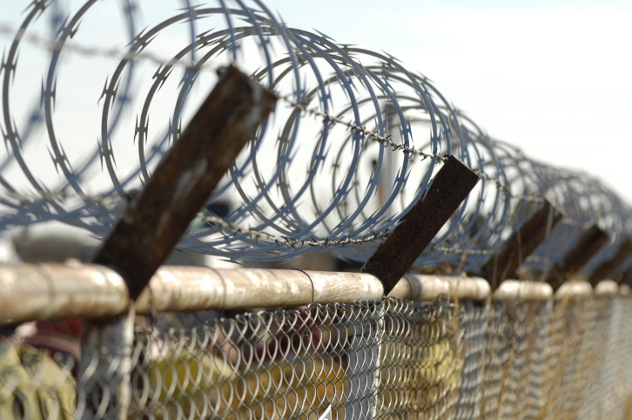
Australia is one of the wealthiest and safest nations in the world, so it’s no surprise that people fleeing torture and genocide try to get there. In 2012, 15,000 people sought asylum in Australia. These are not illegal immigrants: Arriving in a country without documentation in order to seek refugee status is legal under both Australian and international law. Of these asylum seekers, 90 percent arrive by plane, and the government is cool with them. But the other 10 percent take the perilous journey from Indonesia in dangerous, unseaworthy boats which frequently sink on the way. What does Australia do with these boat arrivals, some of the most vulnerable people in the world?
Mandatory, indefinite detention (i.e. prison).
The UN calls Australia’s treatment of refugees “cruel, inhuman and degrading.” At Wickham Point Immigration Detention Centre, pregnant women reported constant bullying, including being forced to stand for hours in the heat and being underfed to the point of constant hunger. A woman whose newborn child is in hospital has been sent back to her detention center rather than being allowed to stay with the child. The father, also in detention, has not been allowed to visit the child at all. Remember that these people have not broken any laws.
Perhaps the saddest story of the Australian immigration system is that of Cornelia Rau. Cornelia was found on the street in a delusional state, muttering in German. Immigration officials, assuming she was a German who had overstayed her visa, locked her up in Brisbane Women’s Prison.
But Cornelia was not an illegal immigrant; she was an Australian citizen suffering from schizophrenia. Despite the fact that Germany could find no record of the woman she claimed to be, Immigration refused to consider the possibility that she was Australian. Of course, in prison without her medication, her behavior became even stranger, but the officials saw this as further proof of her untrustworthiness.
Cornelia Rau was never charged with any crime, yet she spent almost a year in prison thanks to “an inept and cruel system.”
9 World’s Longest Fence
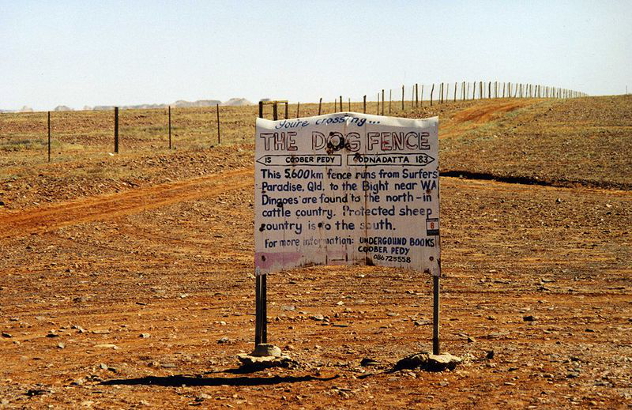
Australia has 75 million sheep, kept for both meat and wool, and almost all of them are in the southeast of the continent. The export of wool in particular is very important to the Australian economy. The problem? Wild dogs called dingoes are also in abundance, and they consider sheep to be a tasty snack. To prevent their sheep becoming a meal for hungry predators, the Australians started building fences to keep the vermin out.
The fence was originally intended to be rabbit-proof, but in this it totally failed. In 1880, many different fences had been built by individual farmers, which offered a sort of patchwork protection. In 1946, Australia passed legislation that brought all the fences together into one enormous barricade. New fences were built and old ones joined together to stretch across all of Southern Australia including New South Wales and Queensland. While the Australian government does offer some subsidies to keep the fence up, the responsibility of maintenance usually lies with the landowners of the specific areas. An increasing threat to the fence is feral camels, who will smash down any section of the fence which isn’t electrified.
8 Kangaroo Meat
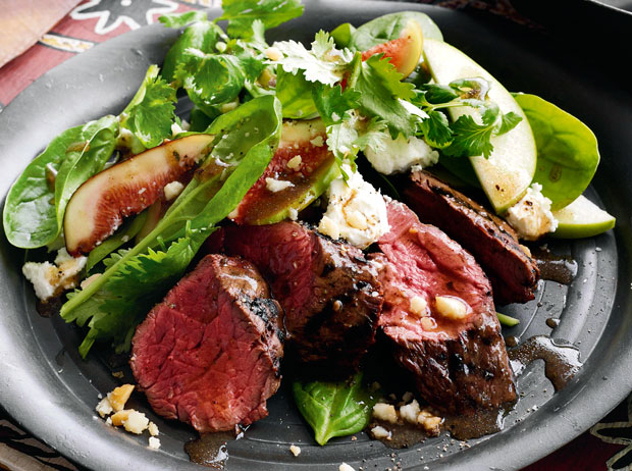
But without all those dingoes around, kangaroos have proliferated to the extent that culling is often called for. Kangaroo meat is very low in fat and has a rich, gamey flavor. It gets very tough when overcooked, but with a little care, it’s a delicious meat.
But until recently, most Australians wouldn’t touch the stuff. One reason is the much-talked about “cultural cringe”—the prejudice held by Australians that Australian culture is intrinsically inferior to others, particularly European. Australian music, art, and cuisine were held in low regard. Fortunately this is beginning to change.
The other, stranger reason is a kids’ TV show called Skippy the Bush Kangaroo, which was incredibly popular. Skippy would make little kangaroo sounds, and the other characters would reply “What’s that, Skippy? Someone’s in trouble?” So many people have an emotional connection now that it makes eating kangaroo difficult for them. It’d be like eating Lassie or Air Bud.
However, with the increase in environmental awareness, kangaroo meat is gaining local appeal. Unlike cows, kangaroos don’t have hooves which churn up the ground, destroying the topsoil, and they consume far, far less water, which is important in a drought-ridden country like Australia. They also don’t produce anything like the amount of methane that cows do, so their impact on global warming is smaller.
Kangaroo meat has gone from being only fit for dog food, to being haute cuisine. Now most upmarket restaurants will have at least one kangaroo dish on the menu, while kangaroo sausages are commonplace at barbecues.
Bonus fact: Australia is the only country in the world that eats its national emblem.
7Discussion Of Euthanasia

Assisting people who are suffering from a terminal illness with their wish to end their lives has long been a contentious issue around the world. Some believe that suicide is wrong in all cases and that helping another person is basically akin to murder. Others believe it is cruel to force someone to stay alive when they are suffering and cannot be cured. In Australia, the law takes the former stance: Euthanasia is a crime.
Australia does not have a bill of rights, so although freedom of speech is a guiding legal principal, it is not actually enshrined. This has made it difficult for the country to even have a public conversation about euthanasia.
A pro-euthanasia group in Australia was going to air a TV ad using an actor to express the difficulties of terminal illness, including the quote: “I didn’t choose to starve to death because eating is like swallowing razor blades.” The ad was blocked by the censors, who felt that it promoted suicide. Of course, promoting assisted suicide for the terminally ill who desired it was the entire point of the ad, so that would make it sort of difficult to satisfy the regulatory agency.
Australia has strong laws against assisting anyone with suicide or giving them advice on the matter; despite this, polls have shown that most Australians are on the side of those who wish to voluntarily end their suffering. In the 1990s, the Northern Territory of Australia legalized euthanasia, but it was overturned by a bill passed at the federal level.
6 The Rum Corps
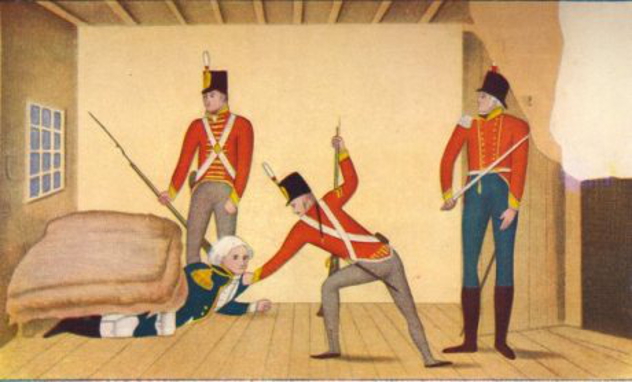
Most people know that colonized Australia began as a penal colony for England. However, there is much more to the story than just that.
First, England sent one fleet loaded with prisoners, soldiers, and supplies to get the colony started. Just a couple of years later, a second fleet arrived with another complement of soldiers. Things seemed to be going well under the leadership of the colony’s first governor, Arthur Phillip. However, Phillip retired from the post and one of his men, Francis Grose ended up with the position. It was after this that things began to take a turn for the worse.
The second fleet of soldiers, known as the New South Wales Corps, was now basically completely in control of the new colony, and began abusing their power. Rum became the main currency and was used to pay prisoners for menial labor. By keeping a tight hold on the rum trade, the newly nicknamed Rum Corps had control over swaths of land, supplies, and labor.
Eventually England had enough of this nonsense and sent Admiral William Bligh to destroy the power of the Rum Corps and its leader John Macarthur. Admiral Bligh had dealt with a mutiny aboard his ship the HMS Bounty only 15 years prior, but was still not quite ready for further traitorous behavior. The Rum Corps refused to go down easy, and after putting up with interference for a couple years, they staged a takeover. Bligh was found cowering under his bed and imprisoned. It was the only successful armed takeover of government in Australian history.
The Rum Rebellion was an ideological battle between the British government, which wanted to keep Australia as primarily a prison colony, and the new generation of entrepreneurs who wanted to open the country up into an independent economy. Although often overlooked, it was a pivotal event in the shaping of Australia’s identity.
5 Ugg Boots
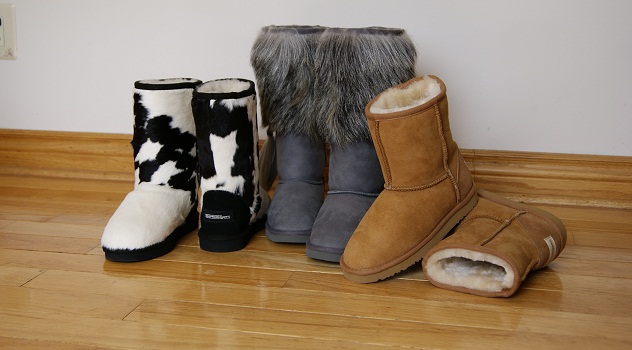
Ugg boots were first created by Australian farmers, who used sheepskin to stay warm. As the years went by, many Australian surfers also cottoned on to using them for their warmth-giving properties. Although popular in America, most Australians consider them too dowdy to be worn outside the house. So how did they get the reputation for being fashionable in the US?
When the boots landed on American shores, a company named Decker decided to copyright them, and after a marketing blitz in which some celebrities endorsed the product, they became a runaway hit. Decker got greedy, and quickly started trying to shut down Australian manufacturers of ugg boots, for using the now-trademarked name.
To the Australian manufacturers the claim was ludicrous, as they had been selling the boots for many years already. The Australian manufacturers took their claim to court, explaining that “ugg” was actually just a slang word for “ugly,” and thus the trademark was invalid. Fortunately for the Australians, the court sided with them.
4 Crazy Cult Nuclear Tests?
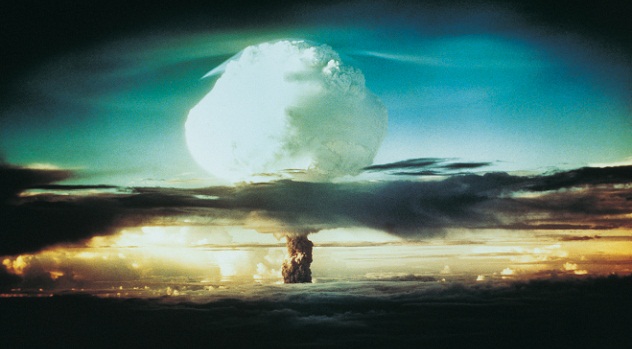
It should come as no surprise that unanswered questions abound in all the vast nothingness of the Australian outback. With all that space to roam, there’s bound to be some dirty dealing going on—at least, that’s what one theory says about the mysterious events of May 28, 1993.
Some of the accounts of that day could point to a possible nuclear explosion. Now, if you have any confidence in the Australian government (though you may not after reading about their treatment of immigrants), you might not worry about this. Only problem is, the government had nothing to do with it. In fact, the group most commonly fingered for possible responsibility for the event is none other than the Aum Shinrikyo cult of Japan, famous for their 1995 sarin gas attacks on Tokyo’s commuters.
The disturbance in question was a measurable seismic event, detected by multiple government seismometers in the area. Several isolated eyewitnesses claimed to hear an extremely loud boom and said they’d seen one (or multiple) fireballs streaking down from the sky at the same time. The New York Times ran a story in 1997 investigating the possibility of Aum Shinrikyo’s involvement based on the cult’s ownership of 500,000 nearby acres of farmland and their alleged interest in nuclear weapons (they were said to have several members with a background in Russian weapons). However, critics point out that the reports and investigations were delayed several years from the time of the alleged test, that sightings of fireballs are somewhat common in this area (meteors?), and that the applicable seismometer readings pointed to fairly standard earthquakes. But some will always hold to the cult explanation, and even the Australian Geological Survey (the folks with the seismometers) said there wasn’t enough evidence to conclusively call it an earthquake-meteor combo.
3 Stadium Hijinks

Australians love sports, and due to their passion they punch well above their weight on the world scene. Australia was fourth in medal count in the 2004 Olympics (second per capita), and they are consistently among the top-ranked when it comes to cricket. While Australians take their cricket very, very seriously, they are not without a sense of humor when it comes to the matches.
At one cricket match against England in the 1980s, a group of fans brought a cooler with them that contained an entire pig. They told the security guards that it was soon going to be lunch and they were allowed in. However, it turned out that the pig was part of an elaborate practical joke.
To make it appear that the pig was dead, they had given it an anesthetic. Later in the match, when the pig had awoken, it was released onto the pitch with the names of two of England’s chubbier players inscribed on its sides. Everyone had a good laugh, but no one knows what happened to the pig.
2 Drop Bears
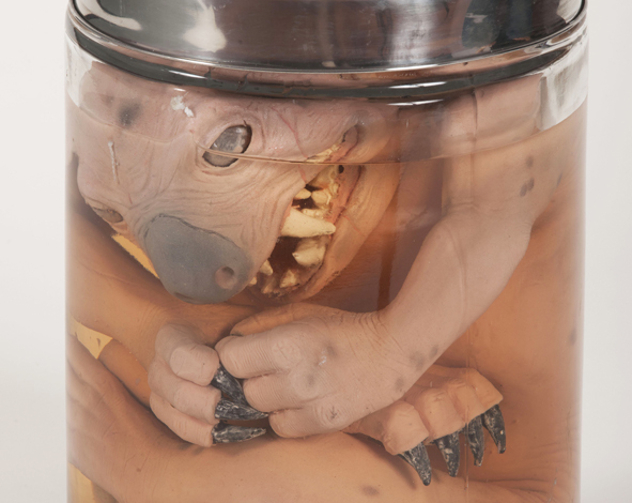
You probably know that Australia has some of the more deadly animals in the world, and the drop bear ranks among them. Drop bears are similar in appearance to koalas, but much larger. Unlike the herbivorous koala, drop bears are predatory, and have the powerful jaws and razor-sharp claws to match. They are known to drop from the trees and often take bushwalkers completely by surprise.
The most fascinating fact about the drop bear is that it was completely made up to have a laugh at tourists. The origins of the drop bear myth are hidden, but it’s so well-known to Australians that any tourist trying to check the veracity of it will have the story vigorously confirmed. The Australian Museum even put together a detailed description of this fake creature and Australian Geographic published a straight-faced report claiming that drop bears are more likely to target tourists.
Other pieces of advice tourists are likely to hear include the useful tip that drop bears will stay away if you put Vegemite behind your ears, wear forks in your ear, or urinate on yourself. Admitting that drop bears aren’t real is considered by many Australians to be a worse crime against country than burning the flag.
1 Marree Man
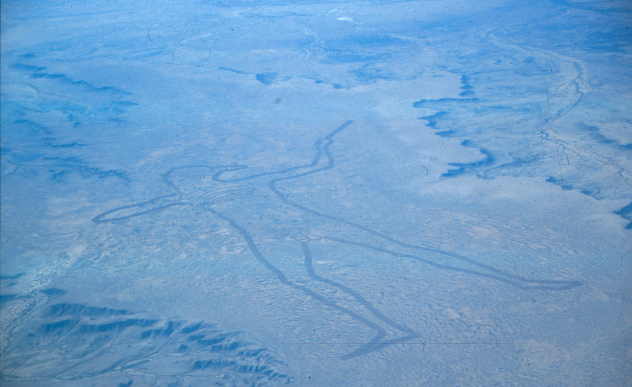
One of the many mysteries of Australia is the Marree Man, an enormous depiction of an Indigenous man carved in the desert. The drawing is over 4 kilometers (2.5 mi) long and has been a boon for tourism ever since it was noticed, well over a decade ago. The strangest part is that no one knows who is responsible for the drawing, or how and why they put so much effort into it.
To the people who own the land and run tourist ventures, the more important question is how they can restore the drawing, as it has faded over time. The people who make money by taking people on flights over the drawing are quite happy with this mystery, but many Indigenous Australians are not so pleased. Some feel that the tourism flights over their lands are insulting to their beliefs and would prefer if the drawing was simply removed from the desert.
As no one knows who drew the figure, it is likely to remain in controversy for years to come. The area that includes the drawing has been the focus of a land dispute between two different Indigenous groups who hold opposing viewpoints on how the land should be used.








